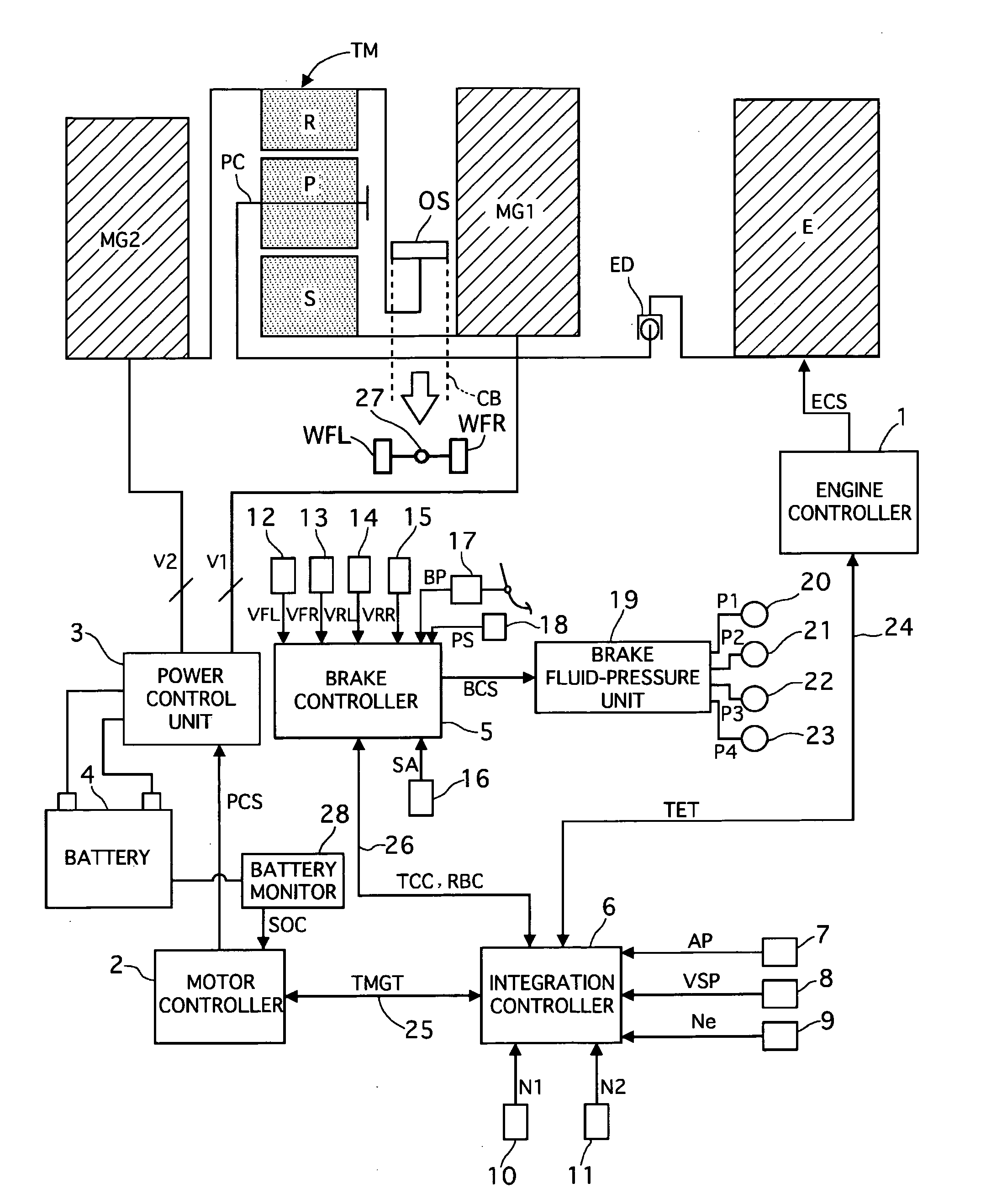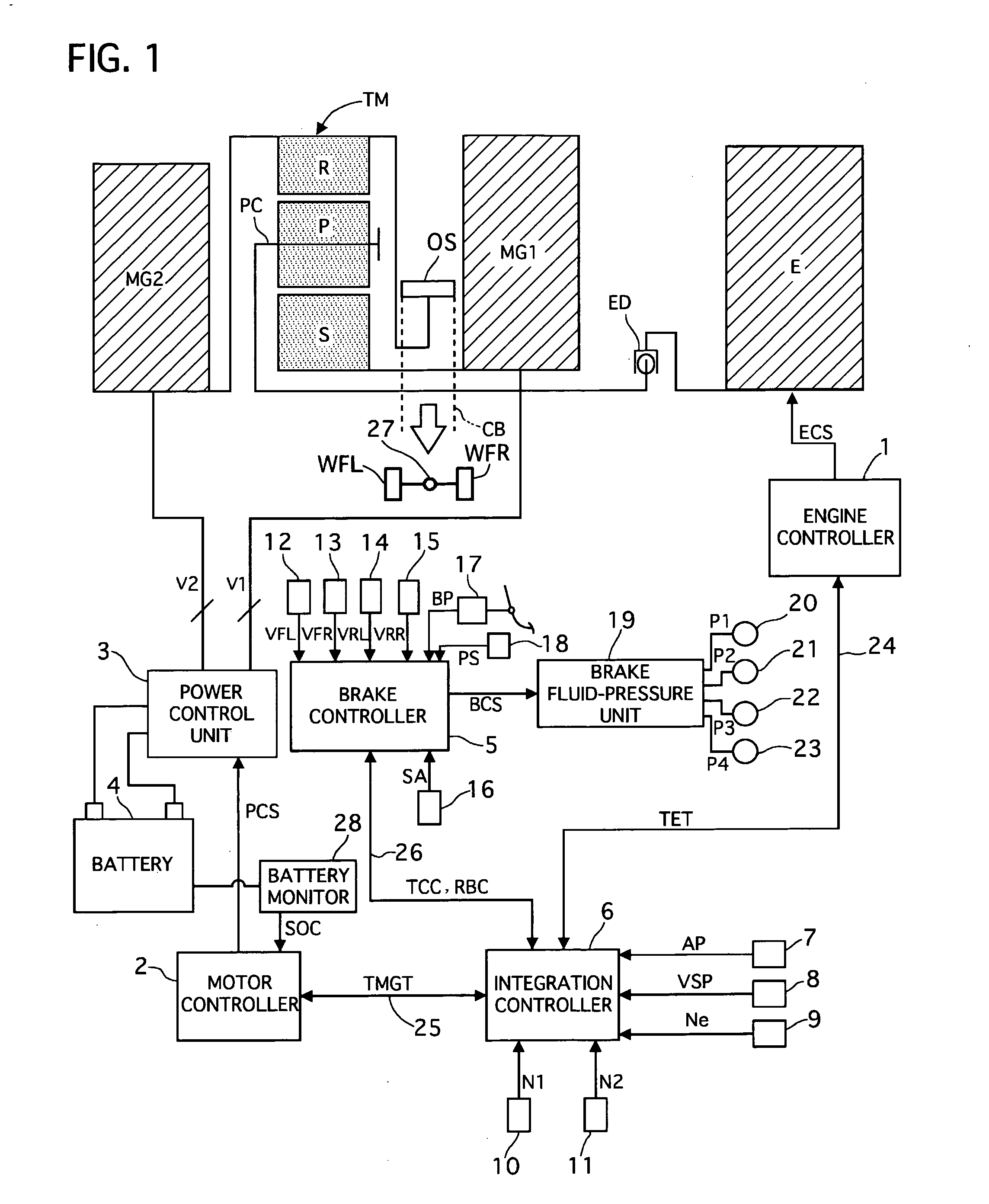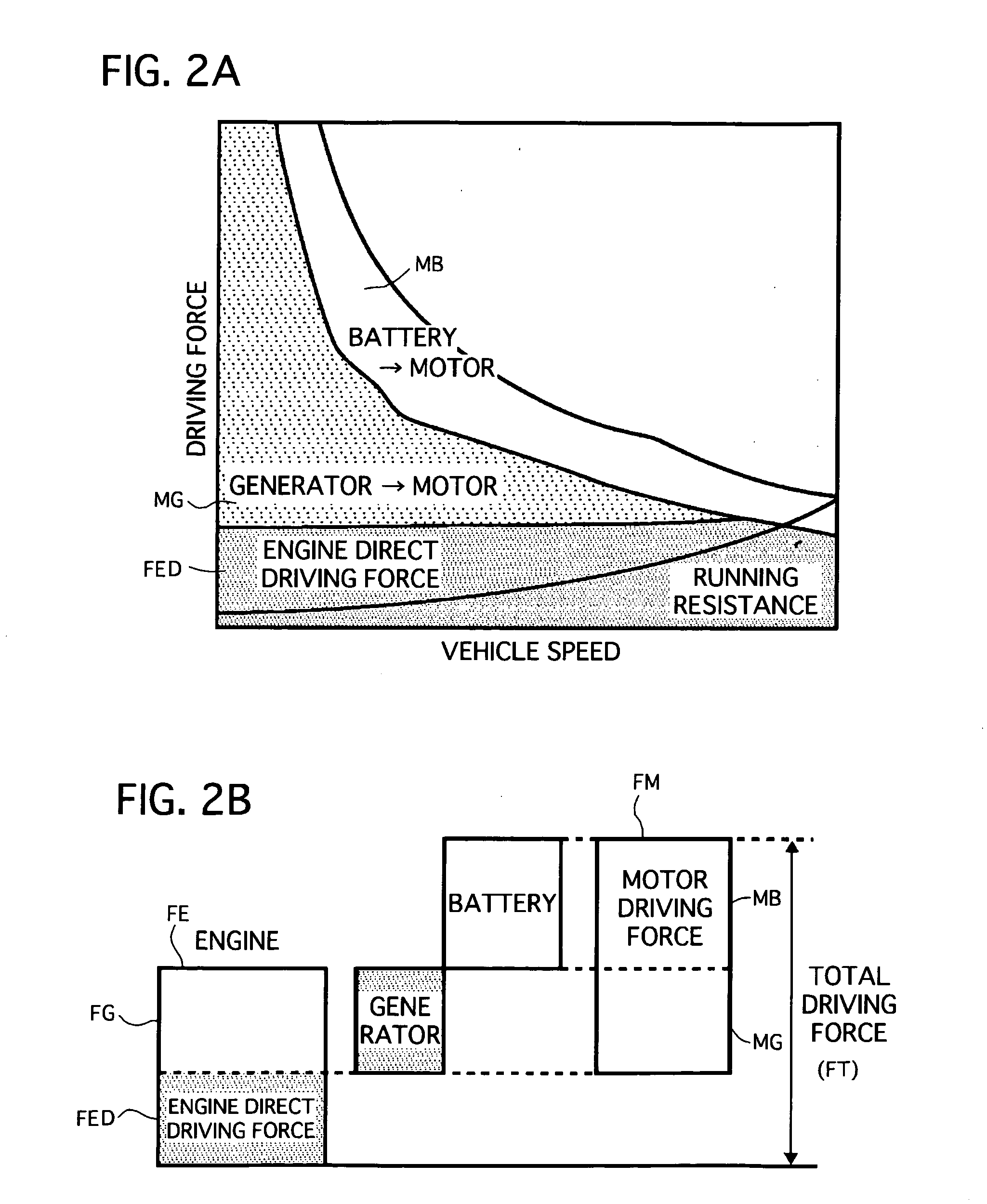Regenerative braking system for motor vehicles
a regenerative braking and motor vehicle technology, applied in the direction of braking systems, brake components, gearing, etc., can solve the problems of incompatibility between the improvement of fuel efficiency and the improvement of stability and degradation of fuel efficiency, and degradation of the stability and/or controllability of the vehicle, so as to achieve the effect of more reduction of the amount of regenerative braking
- Summary
- Abstract
- Description
- Claims
- Application Information
AI Technical Summary
Benefits of technology
Problems solved by technology
Method used
Image
Examples
first embodiment
[0043]FIG. 1 shows a schematic diagram showing a power train and a braking system of a hybrid electric vehicle. The vehicle is equipped with an engine E, a first motor / generator MG1, a second motor / generator MG2, a power split device TM, and a braking system including the regenerative braking system of the present invention and a fluid-pressure brake system. This vehicle is a front-wheel drive vehicle, which is propelled by using a combination of the engine E and the motor / generators MG1 and MG2.
[0044] The engine E employs a gasoline engine, a diesel engine, and the like, and is operated based on an engine control signal outputted from an engine controller 1.
[0045] The first and second motor / generators MG1 and MG2 are synchronous motor / generators with a rotor embodying plural interior permanent magnets inside of it and a stator containing the rotor and wound around by windings. The first and second motor / generators MG1 and MG2 are independently controlled based on a power control s...
second embodiment
[0127] Next, a regenerative braking system of a second embodiment according to the present invention will be described with reference to the accompanying drawing of FIG. 22.
[0128] This regenerative braking system is equipped with a demand regenerative torque calculating module, a regenerative torque demand limit calculating part, and a demand regenerative torque selecting module.
[0129] The demand regenerative torque limit calculating part, as shown in FIG. 22, includes a front wheel speed variation calculating module 311, a vehicle body speed calculating module 312, an estimated front wheel speed variation calculating module 313, an estimated understeer amount calculating module 314, and a regenerative amount maximum limit calculating module 315′.
[0130] The front wheel speed variation calculating module 311 is electrically connected to a front left wheel speed sensor and a front right wheel speed sensor, the vehicle body speed calculating module 312 is electrically connected to a ...
third embodiment
[0137] Next, a regenerative braking system of a third embodiment according to the present invention will be described with reference to the accompanying drawings of FIGS. 23 and 24.
[0138] The regenerative braking system of the third embodiment is equipped with a demand regenerative torque calculating module, a demand regenerative torque maximum limit calculating part 31, and a demand regenerative torque selecting module.
[0139] The demand regenerative torque maximum limit calculating part 31 is, as shown in FIG. 23, provided with a front wheel speed variation calculating module 311′, a vehicle body speed calculating module 312, an estimated front wheel speed variation calculating module 313, an estimated understeer amount calculating module 314′, and a regenerative amount maximum limit calculating module 315″.
[0140] The front wheel speed variation calculating module 311′ is used for obtaining an actual front wheel speed variation VWFDIF as actual steering amount information. The ca...
PUM
 Login to View More
Login to View More Abstract
Description
Claims
Application Information
 Login to View More
Login to View More - R&D
- Intellectual Property
- Life Sciences
- Materials
- Tech Scout
- Unparalleled Data Quality
- Higher Quality Content
- 60% Fewer Hallucinations
Browse by: Latest US Patents, China's latest patents, Technical Efficacy Thesaurus, Application Domain, Technology Topic, Popular Technical Reports.
© 2025 PatSnap. All rights reserved.Legal|Privacy policy|Modern Slavery Act Transparency Statement|Sitemap|About US| Contact US: help@patsnap.com



